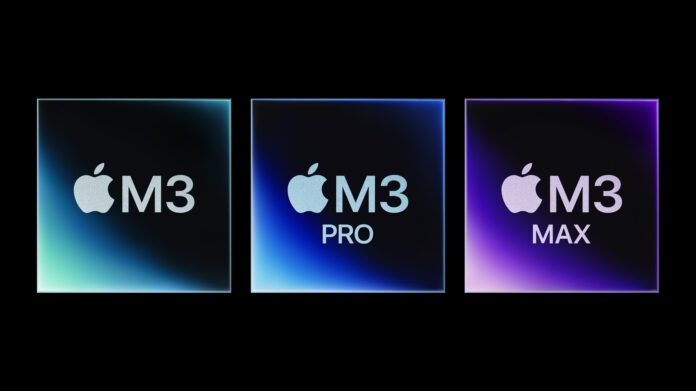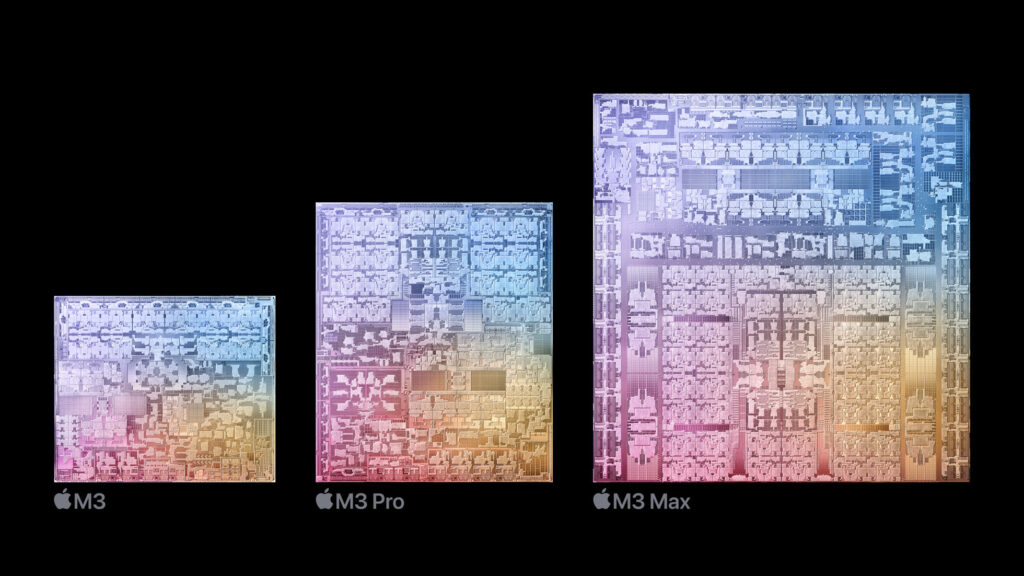At Apple’s Scary Fast event today, the company announced the Me, M3 Pro, and M3 Max chipsets. Using 3-nanometer technology, these chips serve as a successor to the M2 series chipsets. With the M3 family of chips, Apple claims to have introduced its most advanced graphics architecture ever.
Apple M3 Series:
The new M3 family chips render up to 2.5x faster than the M1 family chips. M3 chipsets offer 30 percent and 50 percent faster CPU performance cores and efficiency cores, respectively, than M1 chipsets. It is also 60 percent faster than the M1 chip. Dynamic Caching is a new technology used by the chipset, as mentioned above.
As a result of this new technology, only the exact amount of memory needed for each task is used. As the cornerstone of Apple’s new GPU architecture, this is an industry-first technology that is transparent to developers. The combination of ray tracing and the new graphics architecture allows pro apps to deliver up to 2.5x the speed of the M1 family.
Up to 128GB of LPDDR5 unified memory can be supported by the M3 chipset family. Also included in the new chip are hardware accelerations for H.264, HEVC, ProRes, and ProRes RAW video codecs.
Apple M3 SoC:
Apple’s M3 chip has 25 billion transistors, five billion more than its M2. For graphic performance, this chip has a 10-core GPU that is 65 percent faster than the M1. In addition, the chip has an 8-core CPU with four performance cores and four efficiency cores. According to Apple, the M3’s CPU is 35 percent faster than the M1. The new chip also supports 24GB of unified memory.
Apple M3 Pro SoC:
With 37 billion transistors and an 18-core GPU, the newly introduced M3 Pro provides extremely fast performance for graphics-intensive tasks. It is 40 percent faster than the GPU in the M1 Pro. Furthermore, the new chip also supports up to 36GB of unified memory, making it possible to work on larger projects simultaneously. There are 12 cores on the chip. Six of the 12 cores are performance cores, and the other six are efficiency cores. M3 Pro’s single-threaded performance is 30 percent faster than M1 Pro’s.
Apple M3 Max SoC:
There are 92 billion transistors in the Apple M3 Max. In comparison to the M1 Max, the new chip has a 40-core GPU that is 50% faster. Additionally, it supports 128GB of unified memory. This chip has 16 cores, 12 of which are performance cores and four efficiency cores. Compared to M1 Max, this combination offers 80 percent faster performance. It also supports two ProRes engines that make it possible to post-process even high-resolution video.
MacBook Pro and the new iMac are powered by the newly announced M3, M3 Pro, and M3 Max chipsets.







